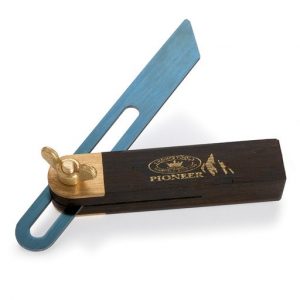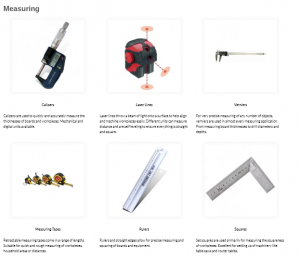Tips & Tricks – Measuring tools for Carpentry
Although expensive Power tools are nice to see in any shop or workshop, the most fundamental components are the Measuring tools. All Skilled carpenters depend on Micro fractions, so the quality can capabilities of the measuring tools you have in your workshop can ultimately be the difference between frustration or beautiful furniture or any woodwork project
The Tape measure is the most common measuring tool found in every home, when you have a few, try and stick to one primary quality Measuring Tape as too many different ones can sometimes have discrepancies. One Measuring Tape will keep measurements consistent. A 16-foot measuring tape will work nicely in a wood shop, as you rarely measure beyond that length.
The dedicated right angles of a Framing square keep projects square, especially during assembly. The large Framing Square that measures 24” x 16” gets used the most in carpentry, when perfectly square boxes are critical. Framing squares come in handy for checking square edges o large wood pieces of a project such as Plywood and doors. Smaller dedicated Framing squares also come in handy for tighter spaces where the standard 24” framing square cannot fit. With the help of a square, which runs a line along the workpiece opposite the piece to be attached, accuracy in nailing, screwing and stapling becomes nearly fool proof.

Similar to the framing square the Try-Squares are dedicated right angles, however, unlike framing squares, Try- squares have a metal blade fastened into a wood handle rather than a single body construction. The thicker wooden handle provides a lip on either of the blade, allowing the tool to rest on the work piece more easily than its larger single bodied counterpart.
As a favourite to many carpenters the Combination square is one of the most versatile tools in a carpenter’s entire collection. In its simple form, the Combination Square verifies square edges and flat surfaces of any workpiece. Beyond that purpose, the adjustable head of the Combination Square is crucial for calibrating or checking machinery and laying out joinery. Because of the Combination square’s practicality, most shops have several combination squares on hand in sizes ranging from 4” – 12”

Most woodworking projects are made up of 90-45-degree angles, but random angles do arise, and the sliding T-Bevel is there to greet them. The compassing blade of the Sliding T-bevel matches any angle thrown its way, which can then be transferred to a workpiece or measured using a protractor (that old plastic tool we became used to in high school)

A Tape measure can be used in a pinch as a Ruler, but it can be a bit clunky, especially for making critical measurements in the middle of a workpiece. A Flat 6” Ruler fits nicely in any pocket and makes meticulous measurements in 1/64” increments a piece of cake. Each edge on a good quality Ruler will offer measurements in different increments, meaning inches on one edge will be divided in eights of an inch, and the most precise edge will be broken down into 64ths of an inch.
The Level can be a frustrating tool not because its difficult to work with, but because it essentially measures imperfections. Nothing is as demoralizing as assembling a table to discover a slight slant or realizing the kitchen cabinets you’ve installed are uneven after you’ve fastened them. Diligently check work with a Level, and hiccups will be resolved before they become major issues.
Tools4Wood are able to accommodate any request related to an associated product. Please browse through our online catalogue.





Comments
Add comment